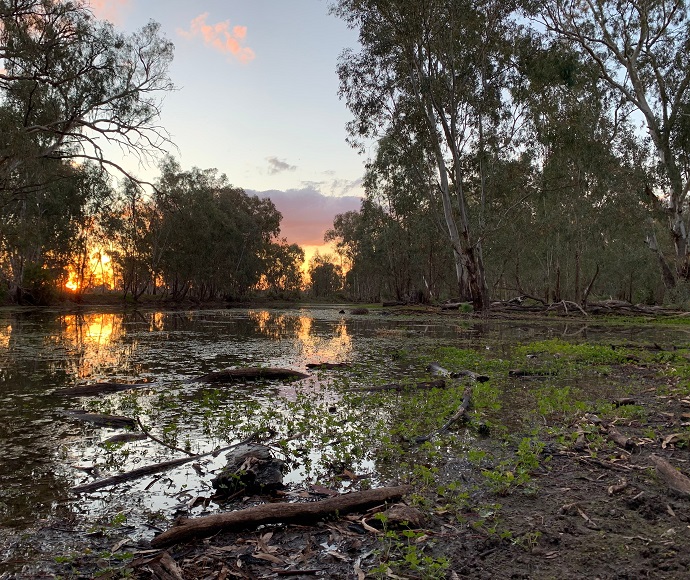Spoonbills, ibis, egrets and herons are converging on the Great Cumbung Swamp for what promises to be a bumper breeding season.

Increasingly rarely, the lower Lachlan and Murrumbidgee rivers peak together and deliver simultaneous high flows into the Great Cumbung Swamp. When this happens in winter/spring – as it has this year – it creates the perfect conditions for waterbird breeding.
Murrumbidgee water manager James Maguire said the outlook was promising for a sizeable waterbird breeding event.
‘The flows from the Lachlan and Murrumbidgee are creating the most significant inundation event for this region since 2016,’ Mr Maguire said.
‘Already there are significant waterbird colonies taking up residence in nearby Lowbidgee, so it is just a matter of time before the Great Cumbung Swamp bursts into life,’ he said.
Lachlan water manager Joanne Lenehan said the wide variety of habitats inundated by this event were providing ideal foraging grounds for waterbirds to feed and improve their body condition in preparation for breeding in the months ahead.
‘For months now, thousands of hectares of wetland have been inundated, providing a wide variety of feeding habitats to suit all species of birds. This includes the arrival of migratory shorebirds such as sharp-tailed sandpipers that have flown thousands of kilometres from the northern hemisphere, as well as colonial nesting waterbirds.
‘Tens to hundreds of thousands of these waterbirds can nest together in tight clusters in just one colony location for four months or longer – showing just how productive these unique floodplain landscapes can be,’ Dr Lenehan said.
‘The Great Cumbung Swamp includes areas of deep, open water lakes and shallow marsh mudflats. These habitats are buzzing with insects, frogs and tadpoles.
‘Among the frogs now being detected at the site are endangered southern bell frogs.
‘This population is likely connected to the Lowbidgee stronghold for the species in the Nap Nap and Gayini wetlands to the south.
‘After the dry years our region has experienced lately, this event is a fantastic step toward restoring these important waterbird and frog populations,’ she said.
Water for the environment will be used throughout the coming months to ensure the needs of nesting waterbirds and other wetland dependent species are met and populations have a chance to recover from recent dry times.
Various parts of the Great Cumbung Swamp will draw down at different rates throughout the season with shallow, ephemeral habitats becoming mud flats or vegetated plains by February or March 2022, while the deeper lakes can provide refuge for over 12 months.
To learn more about this topic, visit Water for the environment.




